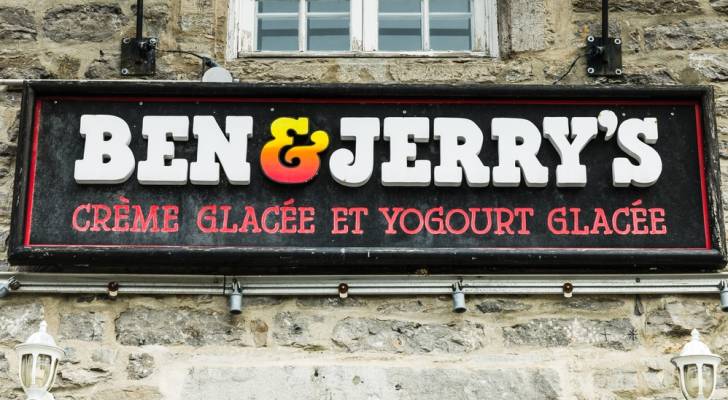Protect up to $800K from inflation: Why Canadians are moving fast on high-interest savings accounts

Knowing where to put your savings can be a struggle. Investing can lead to high returns, but make it harder to access your cash in a pinch. And on the other hand, while your standard savings account is always accessible, interest rates can be low. If you’re looking for low risk, but hoping for some […]
When the bill comes with a catch: Mississauga cafe closes after scam allegations

Farzi Café, a high-end Indian eatery in Square One Shopping Centre in Mississauga, Ontario, first hit headlines earlier this year when it was temporarily shuttered over health violations, documented in public health orders after inspectors found multiple safety infractions. Yet, its reopening proved short-lived. Last week, the restaurant quietly closed its doors again. This time, […]
Think you need to ditch Ben & Jerry’s to ‘Buy Canadian?’ The home of some of your favourite brands may surprise you

Canada is home to many well-known brands and manufacturers, but some of the foods, drinks and clothing brands you may assume are made here actually come from elsewhere – and vice versa. With globalization and corporate acquisitions, the origin of a product isn’t always obvious, even if the brand has strong Canadian ties (or even […]
Canadians could save nearly $4K a year with U.S. tax rates — here’s how to fight back against high taxes

It’s been commonly said that there are three certainties of human existence: life, death and taxes. For Canadians, however, that phrase should be edited slightly to, “life, death and high taxes” — especially when comparing our tax rates to our southern neighbours. A recent report from The Hub underscores this reality, as author Alicia Panincic […]
McDonald’s has shuttered 6 locations around Chicago’s iconic Loop neighborhood — despite signs of an economic rebound in the area. Why the fast food giant may be pulling back on its presence

Those looking for a quick bite of McDonald’s in the heart of downtown Chicago might have to look elsewhere. Six locations in close proximity within and around the city’s iconic downtown neighborhood — the Loop — have closed recently, according to CBS News Chicago. Now, there are only four left in the central business district. […]
Kristi Noem got her bag, $3,000 stolen by masked thief from a DC restaurant despite Secret Service presence — here’s how the robbery went down and how to prevent a similar hit

You can’t track cash — so if someone takes it, you’re out of luck. The Department of Homeland Security (DHS) confirmed that on Sunday, April 20, Homeland Security Secretary Kristi Noem’s purse was stolen. Don’t miss I’m 49 years old and have nothing saved for retirement — what should I do? Don’t panic. Here are […]
‘I have no money now’: This retiree sunk nearly her ‘entire life savings’ into a half-built house in Florida that her bankrupt builder won’t finish — and she’s not alone
Some homebuyers in Citrus Springs, Florida, are in shock after the Van Der Valk Construction company filed for Chapter 11 bankruptcy in April, leaving many homes unfinished. The Citrus County-based company is leaving many homeowners, mostly retirees, holding the bag financially. Don’t miss I’m 49 years old and have nothing saved for retirement — what […]
Extreme weather takes growing toll on commercial insurance sector

Canada faced one of its most expensive years for insured losses in 2024, with severe weather wreaking havoc on both homes and businesses. While homeowners bore the brunt of the damage, commercial properties also suffered massive losses, pushing the total insured damages to over $1.7 billion — the second-highest in the country’s history. "Thousands of […]
Canadians not looking ahead in 2025 with rose-coloured glasses

Many Canadians are looking at their financial well-being in 2025 with at least some level of concern. A new H&R Block survey reveals 64% of Canadians are concerned that 2025 is going to be a challenging year for them financially. "Many Canadians are feeling the pinch of higher costs-of-living and are looking to manage spending […]
BC man’s home assessed at $2 over landslide risk — What this means for at-risk homeowners across Canada

After heavy rainfall in 2021, Chris Rampersad’s property on Chilliwack Lake Road narrowly missed massive damage, as a landslide halted about five metres before his home according to the Vancouver Sun. Rampersad felt lucky at the time but little did he know that his property problems were just beginning. In 2024, Rampersad was advised the […]